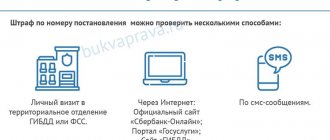What happens if there are 2 administrative offenses in a year?
Good afternoon. What happens if there are 2 administrative offenses in a year?
Lawyer Antonov A.P.
Good afternoon
According to Art. Art. 4.3, 4.4, 4.6 of the Code of Administrative Offences, the following are recognized as circumstances aggravating administrative liability:
1) continuation of illegal behavior, despite the demand of authorized persons to stop it;
2) repeated commission of a homogeneous administrative offense, that is, the commission of an administrative offense during the period when a person is considered subject to administrative punishment in accordance with Article 4.6 of this Code for committing a homogeneous administrative offense;
3) involvement of a minor in the commission of an administrative offense;
4) commission of an administrative offense by a group of persons;
5) committing an administrative offense during a natural disaster or other emergency circumstances;
6) committing an administrative offense while intoxicated or refusing to undergo a medical examination for intoxication if there are sufficient grounds to believe that the person who committed the administrative offense is intoxicated.
A judge, body, or official imposing an administrative penalty, depending on the nature of the administrative offense committed, may not recognize this circumstance as aggravating. The circumstances provided for in Part 1 of this article cannot be taken into account as aggravating if these circumstances are provided for as a qualifying feature of an administrative offense by the relevant rules on administrative responsibility for committing an administrative offense. This Code may provide for other circumstances that aggravate administrative liability for the commission of certain administrative offenses, as well as features for taking into account circumstances that aggravate administrative liability when imposing an administrative penalty for committing certain administrative offenses. If a person commits two or more administrative offenses, an administrative penalty is imposed for each administrative offense committed. When a person commits one action (inaction) containing elements of administrative offenses, liability for which is provided for by two or more articles (parts of articles) of this Code and the consideration of cases of which is under the jurisdiction of the same judge, body, official, administrative punishment is imposed within the limits sanction providing for the imposition of a more severe administrative punishment on the person who committed the specified action (inaction).
In the case provided for in Part 2 of this article, an administrative penalty is imposed: 1) within the limits of a sanction that does not provide for the imposition of an administrative penalty in the form of a warning, if one of these sanctions provides for the imposition of an administrative penalty in the form of a warning; 2) within the limits of the sanction, the application of which may impose the largest administrative fine in monetary terms, if these sanctions provide for the imposition of an administrative penalty in the form of an administrative fine. When imposing an administrative penalty in accordance with parts 2 and 3 of this article, additional administrative penalties provided for by each of the relevant sanctions may be imposed. A person who has been imposed an administrative penalty for committing an administrative offense is considered subject to this punishment from the date the decision on the imposition of an administrative penalty enters into legal force until the expiration of one year from the date of completion of the execution of this decision.
Thus, the repetition of an administrative offense is taken into account only if these offenses are homogeneous (provided for by one chapter of the Code of Administrative Offenses).
Sincerely, lawyer Anatoly Antonov, managing partner of the law firm Antonov and Partners.
Still have questions for your lawyer? Ask them right now here, or call us by phone in Moscow +7 (499) 288-34-32 or in Samara +7 (846) 212-99-71 (24 hours a day), or come to our office for a consultation (by pre-registration)!
Official website of the Supreme Court of the Russian Federation
The Supreme Court of the Russian Federation overturned judicial acts of three instances, by which a citizen was denied a claim against the Ministry of Internal Affairs of Russia and the regional Ministry of Internal Affairs for compensation for moral damage caused as a result of being brought to administrative responsibility (Determination of the Supreme Court of the Russian Federation dated April 6, 2021 No. 11-КГ21-5- K6).
The plaintiff substantiated his claim by the fact that a police officer drew up a report against him on an administrative offense under Part 5 of Art. 20.2 of the Code of Administrative Offenses (violation by a participant of a public event of the established procedure for its conduct). Subsequently, by a court decision, the proceedings in this case were terminated due to the lack of an administrative offense. The citizen indicated that as a result of illegal bringing to administrative responsibility he suffered moral and ethical suffering.
In refusing to satisfy the claim, the courts proceeded from the fact that the issuance of a resolution to terminate proceedings in a case of an administrative offense cannot in itself serve as an unconditional basis for recognizing the actions of an official in drawing up a protocol on an administrative offense as unlawful. In addition, the courts indicated that the plaintiff did not provide indisputable evidence of causing him moral or physical suffering.
The Supreme Court of the Russian Federation considered this point of view erroneous. He recalled that, as a general rule, in relations related to compensation for harm, there is a presumption of guilt of the person who caused it. To be released from liability, this person must prove that the harm was caused through no fault of his (Clause 2, Article 1064 of the Civil Code). However, in the case under consideration, the court did not indicate on the basis of what evidence it came to the conclusion that the official’s actions were lawful and that he was not guilty. Having limited itself to indicating that the decision to terminate the proceedings in the case of an administrative offense did not establish the guilt of the official when drawing up the protocol, his actions were not recognized as illegal, the court did not take into account that the proceedings in the case were terminated due to the lack of corpus delicti in the applicant’s actions, his guilt in committing the offense has also not been established.
The plaintiff associated the moral damage caused to him with emotional suffering caused by the infringement of such an intangible benefit as personal dignity and reputational losses that occurred after the initiation of an administrative violation case, as well as with the restriction of his right to freedom of assembly. According to the RF Supreme Court, the courts also did not give a proper assessment to these arguments.
In connection with these circumstances, the RF Supreme Court sent the case for a new trial.
It should be noted that in one of its recent decisions, the Supreme Court of the Russian Federation came to the conclusion that in the framework of a dispute over the recovery of legal fees and compensation for moral damage caused as a result of unlawful bringing to administrative responsibility, the court has no right to question the decision taken as a result of this case a decision to find a person innocent due to the absence of an administrative offense in his actions (see ruling dated April 20, 2021 No. 51-KG21-2-K8).
Tags: administrative responsibility, judicial practice, individual, Armed Forces of the Russian Federation, Ministry of Internal Affairs of Russia
Source: System GARANT
Code of Administrative Offenses 2021: liability of a legal entity
The new Code of Administrative Offenses, which will come into force on March 1, 2021, has retained the basic rules for bringing legal entities to administrative liability. But there are also changes.
The legal entity will be responsible without guilt
The new code, unlike the current one, does not use the concept of guilt of a legal entity. At the same time, it is stated that the organization will be held accountable if it has not taken all measures to comply with established norms and rules <*>. According to the current Code of Administrative Offences, this circumstance is an element of guilt of a legal entity. So, now an organization is considered guilty of an offense if it violated established norms or rules and did not take all measures to comply with them <*>. Although in practice, establishing an organization’s guilt comes down to proving the fact of an offense without clarifying the second element of guilt.
The liability of the legal entity will be additional to the liability of the employee
This principle is expressly enshrined in the new Code. A legal entity will be liable when the liability of the guilty employee is not enough due to the significance of the harm caused. For these purposes, the Code of Administrative Offenses established the grounds and conditions for the administrative liability of a legal entity. This means that only if they exist will the organization be held accountable along with the employee <*>.
A special condition will be required for legal entity liability
The concept of “special condition” has been introduced under which an organization can be held accountable for violations in the field of finance, the securities market and banking, in the field of entrepreneurship, for tax and customs violations.
These are certain circumstances that indicate significant harm to protected interests. However, these circumstances themselves will remain the same. This:
— harm or threat of harm to life and health;
- property damage or the value of the subject of the offense is more than 40 basic units;
- the amount of the transaction (operation, proceeds or income) is more than 40 basic units - if the fine is calculated as a multiple of these indicators or confiscation of income is provided for;
— mandatory confiscation is provided <*>.
When a special condition is not met and none of the circumstances exist, only the guilty employee of the organization can be held liable.
There will be individual exceptions to the rule, as now, when the organization’s liability in the listed areas does not require a special condition <*>.
There will be fewer offenses involving legal entity liability
A legal entity bears administrative liability only if it is expressly specified in the sanction. This is provided for by both the current and new Code of Administrative Offenses <*>.
Under the new Code, a legal entity will no longer be responsible, for example, for:
— non-payment of wages on time <*>;
— non-payment of mandatory insurance contributions or contributions to professional pension insurance <*>;
— violation of the procedure for opening an account for the payer <*>.
In these cases, only the guilty employee will be held accountable.
The period for imposing penalties on a legal entity will be three years
A legal entity can be brought to justice within three years from the date of commission and six months from the date of discovery of the offense. This will be a single period for legal entities <*>. Whereas the current Code of Administrative Offenses differentiates terms for individual offenses. For example, for a violation by the debtor of the legislation on enforcement proceedings <*>, the period for imposing a penalty is 2 months from the date of commission of <*>.
The three-year period will also apply to officials who violated their duties <*>.
For other individuals, the period for bringing to justice will be 2 months from the date of commission or discovery (termination) of a continuing offense, and for tax and customs violations - one year <*>.
A warning will be applied to the legal entity
A warning will no longer be considered an administrative penalty. It will be applied as a preventive measure, including to organizations.
Thus, for the first offense the organization will be warned in writing. A violation will be considered a misdemeanor, punishable by a fine of no more than 50 basic units. Moreover, the organization must admit the offense and not commit the same violation earlier during the year <*>.
For a significant violation, an organization can also be warned, taking into account specific circumstances and if it has not committed the same violation within a year before. A significant offense will be one that is punishable by confiscation, a fine of over 50 basic units, or a fine as a percentage of the value of the subject of the offense, income, etc. or a multiple of these values <*>.
The note to Chapter 16 of the new Code of Administrative Offenses also establishes additional cases and conditions when a warning may be applied for environmental violations.
The minimum fine for a legal entity will be 5 basic units or even less
The new code will reduce the minimum fine for legal entities from 10 to 5 basic units. At the same time, for violation of the taxation procedure, the fine may be even less - it is reduced from 0.5 to 0.1 of the base value <*>.
The penalty will be repaid immediately after payment of the fine for the offense
The new Code introduces different periods after which an organization will be considered not subject to administrative penalties. The deadlines, depending on the severity of the violation, will expire after the execution of the penalty (for example, repayment of a fine):
- for an offense - immediately after execution;
- for a significant offense - after six months;
- for a gross offense - after a year. In this case, a violation is considered gross, for which the legal entity will be subject to liability in the form of deprivation of the right to engage in certain activities <*>.
This means that if the same violation is committed after the specified period, there will be no sign of repetition. And it may entail increased liability <*>.
Currently, a repeat violation is one that is committed before the expiration of a year from the date of execution of the penalty for the same violation. This does not depend on the severity of the violation <*>.
Expedited administrative process from March 1, 2021
Innovations of PIKoAP
The changes to the Administrative Code are not as global as those in the new Administrative Code. The administrative process has not changed conceptually. Among the most important innovations of the PIKoAP is the introduction of an accelerated administrative process . In particular, it is provided that the majority of administrative offenses falling into the categories of administrative offenses <*> and significant administrative offenses <*> will be resolved in an expedited manner .
For this purpose, a special chapter <*> is included in the new PIKoAP. It contains 5 independent articles <*>. The provisions of this chapter regulate the procedural issues of applying preventive measures, as well as the procedure for imposing penalties when recording offenses using special technical means (photo, film and video cameras) and during court proceedings. It also establishes a simplified procedure for proceedings at the scene of the offense when an individual admits his guilt.
So, the accelerated administrative process is applied in 4 cases:
- for an offense committed during the trial <*>;
- when an individual admits his guilt <*>;
- when recording an offense using special technical means operating in automatic mode <*>;
- upon release from liability for committing an administrative offense with a warning <*>.
Next, we will dwell in more detail on the features of conducting the administrative process in each of the above cases.
Administrative proceedings for contempt of court
When an administrative offense is committed during a trial (for example, for contempt of court <*>), an appropriate entry must be made about this. It can be made in a short protocol or directly in the minutes of the court session. Then a decision is made to impose an administrative penalty in the form of a separate procedural document.
This procedure for bringing to administrative responsibility can be applied in the event of an administrative offense being committed in court proceedings in criminal, civil, economic cases or cases of administrative offenses <*>.
Contempt of court can be expressed, in particular:
- disobeying the orders of the presiding judge at a court hearing;
— violation of order during a court hearing;
- committing other actions indicating a clear disregard for the court.
The above actions entail a fine of up to 20 BV, or community service, or administrative arrest <*>.
Administrative process in case of guilty plea
In cases where the offender admitted guilt and agreed to an administrative penalty without drawing up a protocol, the person authorized to draw up the protocol makes a decision to impose an administrative penalty (fine, deportation). It comes into force from the moment it is issued. The fine may be paid on the spot <*>.
The above rule does not apply to:
- an individual, if the sanctions of the new Code of Administrative Offenses provide for public works, administrative arrest, deprivation of the right to engage in certain activities or confiscation;
- Individual entrepreneur, if the offense committed is related to the entrepreneurial activity carried out by him, while the individual entrepreneur is indicated in the sanction and the special condition provided for in Part 3 of Art. 4.6 of the new Code of Administrative Offenses;
- a foreigner (stateless person), if the sanction provides for deportation. An exception is foreigners or stateless persons who arrived at the checkpoint across the State Border to exit the Republic of Belarus;
— administrative offenses committed repeatedly, which entail criminal liability;
- offenses entailing administrative liability at the request of the victim (legal representative) <*>.
The procedure for drawing up a resolution in case of admission of guilt
A list of information has been determined that must be contained in a resolution issued in the event of an individual admitting guilt and agreeing to an administrative penalty <*>. Among them:
— date and place of drawing up the resolution;
— name of the body, position, full name. the person who made the decision;
— information about the offender;
- time, place and circumstances of the offense. In this case, the part of the article or the article of the Special Part of the new Code of Administrative Offenses, which provides for liability, is indicated;
— a note about clarification of the rights and obligations of the offender;
- decision;
— period of ban on entry into the Republic of Belarus (in case of a decision on deportation);
— the amount and procedure for paying the fine, including the grounds for increasing the fine by 2 BV.
In such a resolution it is allowed to indicate other information that is relevant to the administrative offense committed <*>. The document is signed by the person who compiled it. The ruling is then announced to the offender. Upon request, a copy of the document is given to the offender. Other options for serving the decision are also allowed: it can be sent by registered mail, sent via electronic or other communication, including via the Internet <*>.
The resolution must also resolve the issue of material evidence, other property and documents seized (arrested) during the administrative process, including the destruction of items that are of no value and cannot be used, or their release to interested persons (organizations) ) <*>.
Administrative process when recording an offense using special technical means
If an offense against road safety is recorded by special technical means operating in automatic mode, the person authorized to draw up a protocol on the administrative offense issues one of two types of decisions:
— on the imposition of an administrative penalty;
— on release from administrative liability with a warning <*>.
A decree on release is issued in the event of an administrative violation, if within a year before its commission an administrative penalty was not imposed on the person and he was not released from administrative liability for the same violation. The list of administrative offenses for which this rule does not apply is listed in Part 4 of Art. 8.3 of the new Code of Administrative Offences.
The above decisions are made in the absence of the offender. They come into force from the moment they are issued <*>. When these decisions are made, the administrative process is conducted at the location of the authorized government agency (SAI) <*>.
The procedure for drawing up a resolution, which is issued when an offense is recorded using special technical means, is similar to the procedure for drawing up a resolution when admitting guilt. The difference between them is as follows: in the case under consideration, the resolution must contain an image of the vehicle at the time the offense was committed or an image confirming the fact of the offense. Accordingly, such a resolution will not contain information about explaining the rights and obligations of the offender, as well as the period of the ban on entry into our country <*>.
The decision made in the situation under consideration is signed by the person who drafted it. A copy of the decision (or a copy of the decision with a warning) within 3 days from the date of its issuance is handed over or sent by registered mail to the person in respect of whom it was issued, or sent to him via electronic or other communication, including via the Internet <*>.
In the situation under consideration, the official of the body conducting the administrative process does not have the obligation to prove the person’s guilt in committing an administrative offense against road safety and the operation of transport, recorded by special technical means operating in automatic mode <*>.
If you disagree with the imposition of administrative liability (exemption from it) in the manner described above, you can submit a written application to the traffic police at your place of residence. The filing deadline is one month from the date of receipt of a copy of the resolution <*>. In this case, it is also important to keep the envelope or other document marked with the date of delivery. In the future, the administrative process on this fact will be conducted in the manner determined by the new PIKoAP, taking into account the provisions of Art. 4.8 of the new Code of Administrative Offenses and Part 6 of Art. 10.4 of the new PIKoAP. This means that the owner or other person driving the vehicle must independently prove the absence of guilt.
In the event of a protest against such a decision, it shall lose force on the day the said application (protest) is received <*>.
Administrative process when issuing a warning
Exemption from administrative liability applies if the following conditions are simultaneously met: <*>:
— recognition of the fact of committing an offense;
— consent to exemption from administrative liability;
— issuing a warning;
— no administrative penalty within a year before the offense was committed;
- failure to apply exemption from administrative liability within a year before the offense was committed.
Exemption from administrative liability also applies to minors aged 14 to 18 years <*>.
Availability of grounds for exemption from administrative liability, taking into account the provisions of Part 4 of Art. 8.3 of the new Code of Administrative Offenses is established by an official of the body conducting the administrative process. This is carried out on the basis of information, the records of which are maintained in the manner established by the Government <*>.
If the above grounds exist, the person authorized to draw up a protocol on an administrative offense shall issue a decision on release from administrative liability with a warning <*>. Such a resolution comes into force from the moment it is issued <*>.
If it is not possible to obtain the information necessary to make a decision on the spot, the fact of the existence of these grounds is established from the words of the offender. If false information is reported, the decision made shall lose force. A decision is made about this. In the future, the administrative process on this fact is carried out in the manner determined by the new PIKoAP <*>.
The decision made in the situation under consideration must contain information similar to the information when making a decision in the event of a guilty plea, with the exception of the period of the ban on entry into the Republic of Belarus, the amount and procedure for paying the fine <*>. Such a resolution may indicate other information related to the administrative offense committed <*>.
The decision made in the case under consideration is signed by the person who drafted it and is announced to the person in respect of whom it was made. Upon request, a copy of the document is also delivered personally to the person exempted from administrative liability, or sent by registered mail or sent to him via electronic or other communication, including via the Internet.
Other innovations of PIKoAP
The new PIKoAP optimizes the jurisdiction of administrative cases in order to eliminate duplicative functions among regulatory authorities.
To reduce unnecessary document flow, the new Code of Administrative Offenses regulates the use of modern information technologies in the conduct of the administrative process (sending decisions by e-mail or other types of communication, including via the Internet).
The new PIKoAP also expands the list of grounds for closed consideration of a case of an administrative offense and measures to ensure the administrative process . Thus, the court will be able to consider the case behind closed doors in order to ensure the safety of participants in the administrative process and their close relatives <*>. Previously, closed meetings could only be held to prevent the disclosure of information about the intimate aspects of the lives of individuals participating in the administrative process, or information constituting state secrets or other secrets protected by law <*>.
New measures to ensure the administrative process include the possibility of temporarily limiting the rights to leave the Republic of Belarus, drive motor vehicles, small motor boats, and hunt <*>. These measures can be applied by the court at the stage of consideration of cases of administrative offenses against the management order in order to ensure the execution of the decision to impose a fine. To do this, several of the above measures may be applied to the offender <*> for the period until the administrative penalty is executed, but not more than the period established by Part 3 of Art. 14.5 of the new PIKoAP. This means that the maximum validity period of restrictions adopted by the court cannot exceed 2 years from the date the decision entered into legal force.
According to the general rule of the Code of Administrative Offenses of the Russian Federation, bringing to administrative responsibility twice for the same administrative offense is not allowed. However, it is necessary to distinguish between cases where there are two administrative offenses and administrative liability is brought twice, and where there is only one administrative offense and there is repeated administrative liability. We can talk about such a phenomenon as repeated bringing to administrative responsibility due to the presence of several norms in the Code of the Russian Federation on Administrative Offenses.
Firstly, repeated bringing to administrative responsibility is regulated by part 5 of article 4.1 of the Code of Administrative Offenses of the Russian Federation. This provision stipulates that no one can be held administratively liable twice for the same administrative offense. This means that repeated administrative liability is not possible under the law. Let us remind you that a person is considered subject to administrative punishment within one year from the date of execution of the decision (payment of the fine). Secondly, paragraph 7 of part 1 of article 24.5 of the Code of Administrative Offenses of the Russian Federation is devoted to bringing to administrative responsibility twice for the same administrative offense. According to this norm, if proceedings are being conducted against a person for an administrative offense, or they are just about to initiate it and it is established that there are already: 1. a resolution imposing an administrative penalty on the same fact, or 2. a resolution to terminate proceedings on a case of an administrative offense on the same fact, or 3. a resolution to initiate a criminal case on the same fact, in this case the proceedings on the case of an administrative offense cannot be initiated or must be terminated. In practice, big questions arise regarding the application of these norms. There are no general explanations that would cover all the problems of repeated bringing to administrative responsibility. At the same time, there is a fairly large amount of judicial practice that helps to find the answer to this question, when there is administrative liability twice for the same administrative offense, and when not. The position of the Supreme Court of the Russian Federation on the issue of repeated bringing to administrative responsibility is contained in the answer to question No. 21 in the “Review of legislation and judicial practice of the Supreme Court of the Russian Federation for the fourth quarter of 2006”, approved by the Resolution of the Presidium of the Supreme Court of the Russian Federation dated 03/07/2007. Question No. 21: During what period from the moment a person is brought to administrative responsibility for committing a continuing offense is it possible to bring him to administrative responsibility again if the person continues to commit this offense, for example, lives without a passport or without registration? Answer: In accordance with paragraph 14 of the Resolution of the Plenum of the Supreme Court of the Russian Federation dated March 24, 2005 No. 5 “On some questions that arose among the courts when applying the Code of the Russian Federation on Administrative Offenses,” a continuing offense (action or inaction) that is expressed in long-term continuous failure to fulfill or improper fulfillment of the duties assigned to the violator by law. The day of discovery of a continuing administrative offense is the day when the official authorized to draw up a protocol on the administrative offense discovered the fact of its commission. Part 2 of Art. 4.5 of the Code of Administrative Offenses of the Russian Federation provides that in case of a continuing administrative offense, the statute of limitations for bringing to administrative responsibility begins to be calculated from the date of discovery of the administrative offense. Prosecution ends the offence. If a person brought to administrative responsibility does not fulfill the duties assigned to him by law or other regulatory legal act, or does it improperly, then he may be brought to justice again. In this case, it is necessary to take into account the nature of the obligation assigned to the violator and the period required for its fulfillment. The moment the specified period begins to run is the entry into force of a previously issued decision on the same administrative offense. Part 2 of Art. 4.5 of the Code of Administrative Offenses of the Russian Federation provides that in case of a continuing administrative offense, the statute of limitations for bringing to administrative responsibility begins to be calculated from the date of discovery of the administrative offense. The day of discovery of a continuing administrative offense is the day when the official authorized to draw up a protocol on the administrative offense discovered the fact of its commission. The Supreme Court, in response to a question, indicated that prosecution terminates the offense. What is meant here is that the offense is formally legally terminated, because after violations are identified, no one has the right or can prohibit you from continuing to commit an administrative offense. For example, violating fire safety rules or sanitary standards and regulations. Further, the Supreme Court writes that if a person held administratively liable does not fulfill the duties assigned to him by law or other regulatory legal act, or does it improperly, then he may be brought to justice again. In this case, it is necessary to take into account the nature of the obligation assigned to the violator and the period required for its fulfillment. The moment the specified period begins to run is the entry into force of a previously issued decision on the same administrative offense. That is, the Supreme Court does not say that repeated prosecution for the same offense is possible. The court says that if a sufficient period of time has passed to eliminate the violation and the decision in the case of an administrative offense has entered into legal force, then administrative liability may be brought under the same article for the same actions (inactions). The offense will be new, which means new administrative responsibility for the guilty person.









